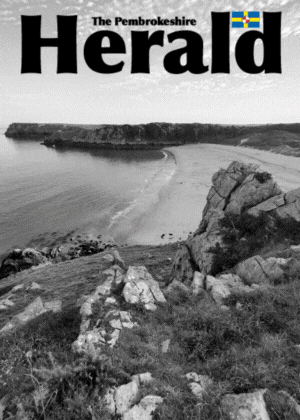Community
Has the mystery of how Preseli rock got stonehenge finally been solved?
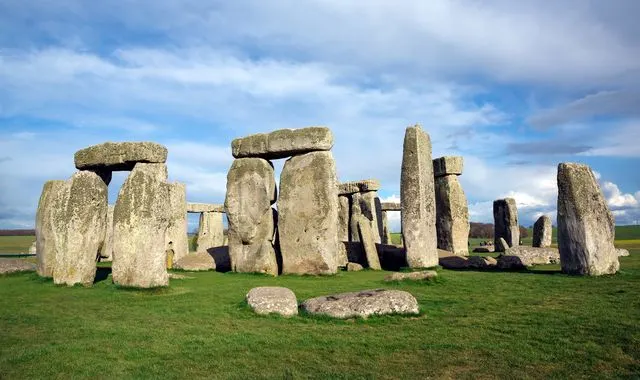
- ‘Lost’ Boulder Proves the Bluestones Were Transported from Wales by Glacier Ice – and NOT by Humans, Study Claims
A NEW study of the ‘lost’ Newall Boulder suggests it was transported by ice, potentially overturning the theory that humans moved the stones for Stonehenge.
How Neolithic humans might have transported so many huge boulders from Wales to Stonehenge is one of archaeology’s most enduring mysteries. However, a new study of a ‘lost’ boulder taken from the Stonehenge site over 90 years ago suggests that humans might not have moved the stones at all.
Dr Brian John, a retired geology lecturer from Durham University who lives in Pembrokeshire, argues that this bluestone boulder bears marks which suggest it was moved by glacial ice. This would undermine the common theory that the bluestone was quarried in the Preseli Hills of southwest Wales and manually transported to the Salisbury Plain.
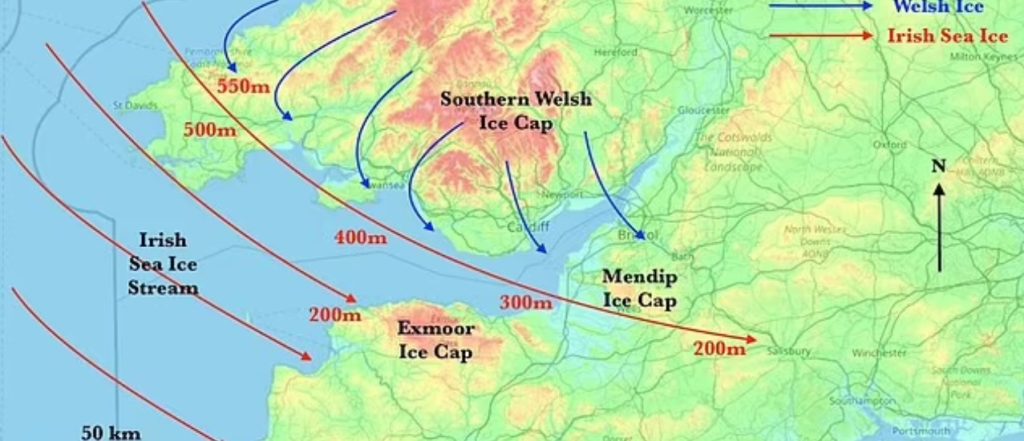
Dr John said: “I think it’s hugely significant because it supports the assumption I’ve had for some years that these are not humanly-transported.”
In addition to the tall Sarsen stones that make up Stonehenge’s distinctive appearance, the site is also home to around 80 smaller bluestones. It is generally agreed that these stones originate from the Preseli Hills of south-west Wales, but how they got to Stonehenge is often debated.
Dr John’s argument centres on an analysis of a bluestone boulder about the size of a human skull, known as the Newall boulder. This boulder was first excavated in 1924 by the geologists Colonel Hawley and Robert Newall. Hawley originally thought the rock was just a piece of rubbish and wanted to throw it away rather than analyse it. However, Newall saved the stone from the rubbish heap and placed it in a cardboard box in his attic alongside a number of other finds from the site.
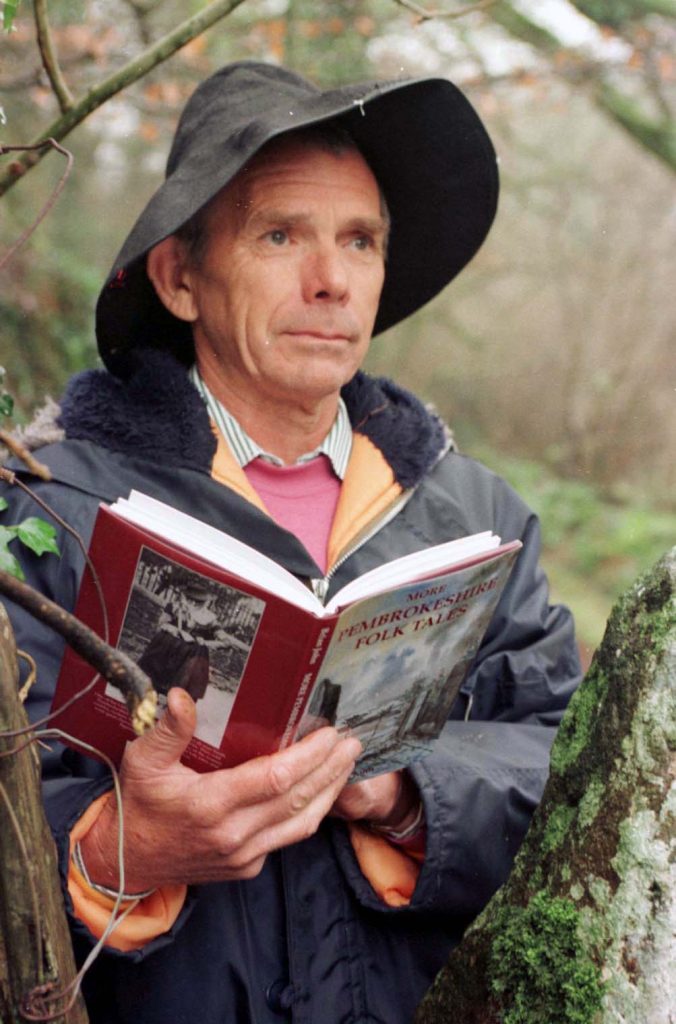
The boulder remained there until Newall passed it over to the Salisbury Museum shortly before he died in 1976. There was a brief burst of interest in the boulder around 1977, but then it was placed back into storage and effectively forgotten for another 46 years.
However, in 2022, Dr John found a reference to the boulder and asked the Museum Director, Adrian Green, if it was still in storage. On discovering that it was, he was given permission to examine it and undertake a careful examination of its surface features.
Through a detailed analysis of the boulder’s surface, Dr John identified a series of marks that suggest glacial, rather than human transport. “Glacially transported boulders tend to have facets,” Dr John explains. “That means they’ve got a number of different faces at angles to one another which actually indicated where a boulder has been abraded or, basically, sanded down.”
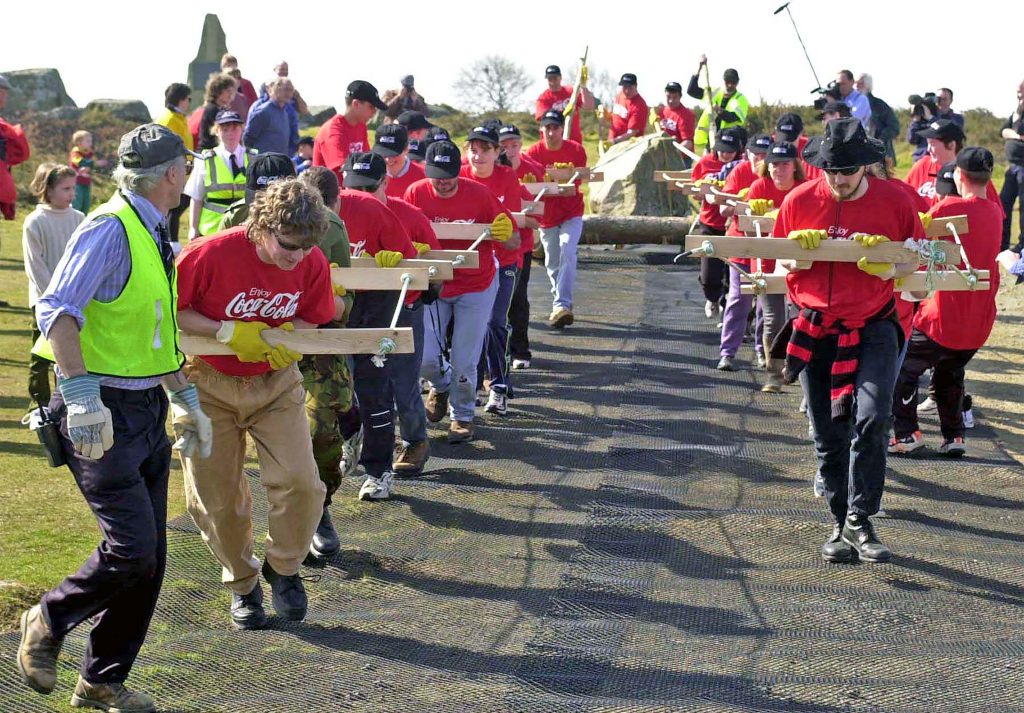
As boulders move with a glacier, they get flipped over from side to side, creating several different flat faces with rounded edges, just like the Newall boulder. In addition, the boulder bears a series of scratches and small fractures, called striations and chatter marks, which are often caused by glacial transport.
And although the Newall Boulder isn’t exactly the same type of rock as the other bluestones, Dr John says this is exactly what his theory would predict. He says: “It’s often claimed in popular articles that the bluestones are all made of spotted dolerite which is this type of igneous rock we get on the Preseli Hills but they’re actually about 30 different rock types. That enormous range of rock types is absolutely typical of the way that ice travels across the terrain and picks up boulders from here there and everywhere.”
Dr John suggests that this provides convincing evidence that the Newall boulder and all of the smaller bluestone boulders at Stonehenge were moved by glacier. His claims land him squarely at the centre of one of Stonehenge’s most contentious debates. The idea that the stones were transported to Salisbury Plain began with the geologist Herbert Henry Thomas in 1923. Although Thomas was quite spectacularly wrong about almost everything, the human transport theory is still extremely popular.
A team of researchers led by Professor Mike Parker Pearson of UCL have been some of the most active proponents of this theory, arguing that the stones were moved over land. Recently, Professor Pearson and his team even claimed to have discovered evidence which identifies the quarry of the Stonehenge bluestone, dating this to 3000 BC.

However, Dr John now says his discovery should “open up the debate” for a consideration of other theories. He says: “Herbert Thomas thought that because glacial transport was impossible they must have been carried by human beings. That’s now part of our national myth because people have not seriously questioned it before; it’s just been accepted as the truth.”
Instead of the orderly and rather deliberate building project we sometimes imagine Stonehenge to be, Dr John says: “I think it’s always been a bit of a shambles.” He argues that the Neolithic builders simply used the stones they had in their immediate vicinity, rearranging and moving the smaller bluestones as needed. And, when they eventually had to travel too far to gather more stones, the project was simply abandoned in the state we now find it. “It was a Neolithic cost-benefit analysis that eventually the costs of getting the stones were greater than the benefits that were coming from it,” he says.
However, the ultimate test for his theory would be cosmogenic dating – a test to determine how long rocks have been exposed to the surface by measuring their exposure to cosmic rays. If Dr John is right, the deeply weathered surface of the rocks should have been exposed to the elements for hundreds of thousands of years. Alternatively, if the stones were quarried they should only have been exposed to cosmic radiation for around 3,000 to 5,000 years.
While the debate over the origin of the stones is still very much alive, Dr John believes the evidence of weathering will remain strong. He concludes: “I’m very confident that if one or other university can get its act together and actually get this done these stones will be seen to have been subject to cosmogenic bombardment from the atmosphere for possibly hundreds of thousands of years. That would knock the quarrying idea on its head once and for all.”
Community
‘Harrowing’ distress now the norm for unpaid carers in Wales

“HARROWING” levels of distress have become the norm for unpaid carers in Wales, a committee has heard, with charities warning of a support system “set up to fail”.
Kate Cubbage, director of Carers Trust Wales, told the Senedd’s health scrutiny committee: “There are too many carers who are reaching crisis point without any support.”
Ms Cubbage explained that most councils are supporting fewer than 500 carers, warning: “There are really, really high levels of unmet need within our communities.”
She told Senedd Members that staff are receiving trauma training to support their mental health due to the levels of distress they are seeing among carers.
Ms Cubbage pointed to a University of Birmingham study which found an increased suicide risk among unpaid carers akin to that of veterans who have seen active service.
“One in eight carers has made a plan to end their own life,” she said, calling for carers to be specifically considered in the Welsh Government’s suicide prevention strategy.
“One in ten has made an attempt… at a time when the average local authority has support plans for less than 0.5% of the caring population.”
Warning of deepening poverty in Wales, the witness expressed concerns about a 31% poverty rate among carers – “far higher” than the 22% in the wider population.
Ms Cubbage added that young carers miss more than six full school weeks each year, compared with pupils without caring responsibilities who miss nearer two weeks.
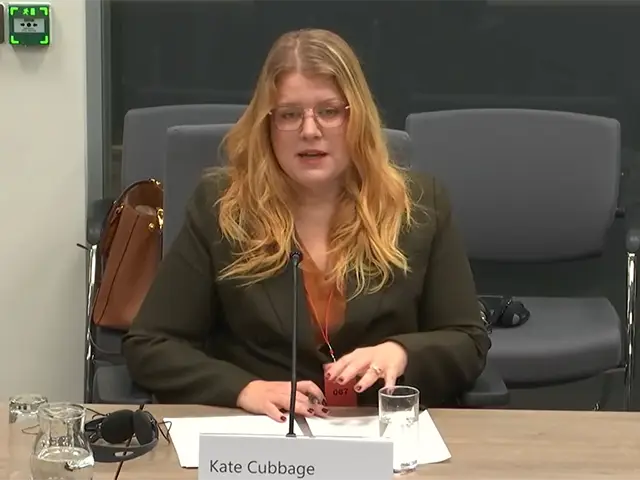
She told the health committee: “It’s no wonder young carers are achieving less at school. They are less likely to go on into further and higher education.
“And if they do make it to university, they’re less likely than their peers to actually graduate.”
Reflecting on a personal note, Ms Cubbage, a parent carer, said her autistic son has accessed services from ophthalmology to audiology over the past 16 years.
“I have never once been signposted to anything that would suggest that I am an unpaid carer or that I can access support… That kind of lived experience is really important.”
Rob Simkins, head of policy at Carers Wales, added: “Things are getting worse: anecdotally, we see that through our services but also that’s what the research tells us.”
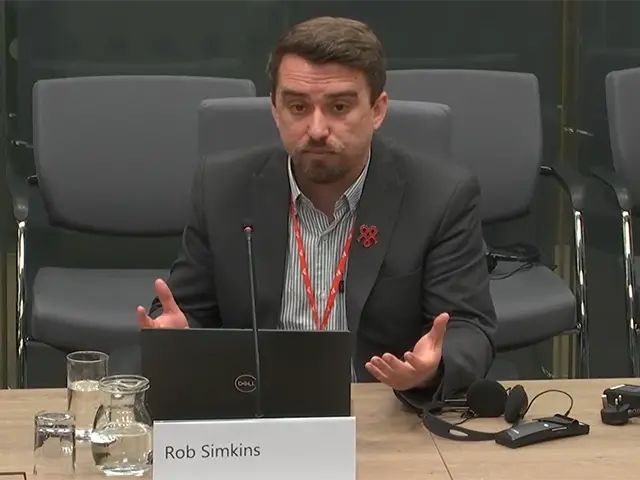
He pointed to a Carers Wales survey which has shown a “shocking” 53% increase in the number of carers cutting back on food and heating.
Giving evidence on Wednesday December 17, Mr Simkins warned of a 39% increase in the number of carers reporting “bad” or “very bad” mental health since 2023.
“All the evidence that we’re collecting shows that this is going in one direction,” he told the committee, adding: “And that’s the wrong direction. It’s a bleak context.”
Mr Simkins said census data shows about 310,000 unpaid carers in Wales but research indicates the number could be nearer 500,000 – roughly 15% of the population.
He cautioned that charities across the country, including Carers Wales, are seeing real-terms cuts in funding from the Welsh Government every single year.
Mr Simkins warned of a “shocking” lack of data and a system “set up to fail” more than a decade on from the then-Assembly passing the Social Services and Wellbeing (Wales) Act.
Warning some councils cannot quantify how many carers’ assessments they could carry out over 12 months, he asked: “How on earth are you meant to collect data from unpaid carers and plan services if you can’t even figure out how many you can assess?”
Asked about carers’ assessments, he highlighted a lack of capacity within councils as he warned a “pitifully low number of carers go on to get any support at all”.
Greg Thomas, chief executive of Neath Port Talbot Carers Centre, told Senedd Members the voluntary sector is being increasingly asked to plug gaps without necessary funding.
He warned the jam is having to be spread “ever-more thinly”, creating a tension between reaching as many people as possible and not wanting to compromise quality of support.
“We’re not quite saying ‘no’ to people,” he said. “But we’re having to say a qualified ‘yes’ about what we’re able to offer… We’re massively overstretched, massively oversubscribed.”
Mr Thomas told the committee the carers’ centre has the required reach and expertise, concluding: “It’s almost give us the tools and we can do the job.”
If you have been affected by anything in this story, the Samaritans can be contacted for free, 24/7, on 116 123, or by email at [email protected].
Community
Pembrokeshire council tax rates could go up in 2026
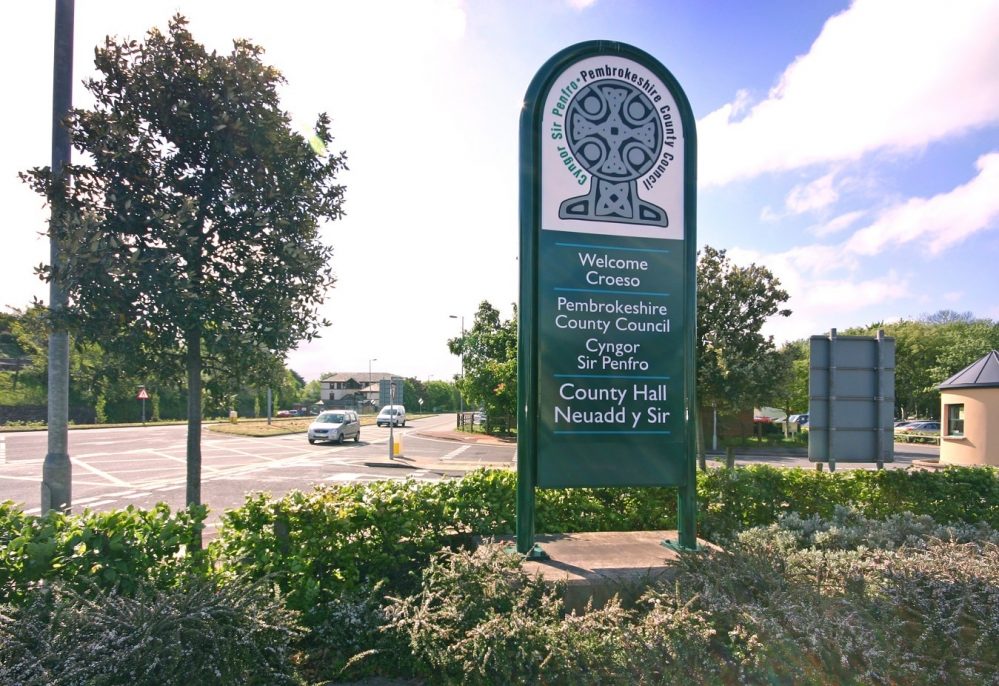
THERE’S just a few days left to have your say on Pembrokeshire’s budget setting for the next financial year, which includes the potential for huge increases in council tax.
Pembrokeshire’s financial situation for next year is some £4m better off after a higher settlement from the Welsh Government, but the council still faces difficult decisions.
While council tax makes up a proportion of the council’s annual revenue, a crucial area of funding is the Aggregate External Finance (AEF) rate from Welsh Government.
Pembrokeshire was to receive a 2.3 per cent increase on its settlement, a total of £244,318,000, amounting to an extra £5,493,000, placing it at joint 13th of the 22 local authorities in Wales.
Now, following a Welsh Government and Plaid Cymru agreement, local authorities including Pembrokeshire have received a better financial settlement.
Speaking at the December meeting of Pembrokeshire County Council, while presenting a report on the outline draft medium term financial plan (MTFP) 2026-27 to 2028-29, Cabinet member for finance Cllr Alistair Cameron said the recent rise in the financial settlement from the Welsh Government had decreased the expected funding gap for the next financial year for the county from £17.7m to £13.6m, but stressed: “There are still increased pressures we are going to have to face.”
The closing date for completed responses to the public consultation is January 4.
The council, in its online consultation, says there are limited ways that the funding gap can be met:
- Increase the rate of council tax charged (each one per cent increase generates approximately £907,000 of additional income).
- Change the way services are provided and delivered – (efficiency gains, reduce what council does etc).
- Increase the amount charged for some services
Cllr Alistair Cameron, Cabinet Member for Corporate Finance and Efficiencies, has said: “It is vitally important that we get the views of as many members of the public as possible to help shape our future proposals with your priorities at the forefront.
“Everyone will be aware that it is increasingly difficult to balance the growing demands on the council but we are determined to put together a budget that enables us to continue to provide essential services for the people of Pembrokeshire.”
The actual setting of the budget and related council tax level along with any potential savings and cuts, will be decided at a later date, with committee scrutiny ahead of Cabinet considering a revised draft budget on February 9, before it is recommended to full council on February 20.
Community
Future of Milford Haven Library set to be secured by agreement

A CALL to residents for a potential £3.35 annual contribution to help support a town library has been overwhelmingly supported, councillors heard.
In a submitted question to Cabinet Member for Residents’ Services Cllr Rhys Sinnett, heard at the December meeting of Pembrokeshire County Council, fellow Milford Haven councillor Cllr Alan Dennison asked: “I and many residents of Milford are deeply concerned about the drastic cut in funding for the Milford library, which has hindered its ability to function effectively, especially given its lack of a permanent location since its sale years ago.
“Many residents have voiced their dissatisfaction with the request for over £3 weekly contributions to keep the library operational for another year, particularly while we see ongoing financial support for Haverfordwest.
“As a councillor for Milford and responsible cabinet member, you are aware of the PCC’s plans for the Haverfordwest library.
“Are you not concerned, as your constituents are, about the insufficient investment in our town’s library, especially in light of the seemingly unlimited funds directed towards Haverfordwest and can you identify what plans are in place to support Milford library going forward?”
Cllr Sinnett responded by saying the county council was working in partnership with the town council and Milford Haven Port Authority to consider options to improve the financial sustainability of the library.
Milford Haven’s library has been based at the town’s Cedar Court for the past 16 years, with its lease running up to 2034, members heard.
He said the cost referred to were a town council survey of residents to see if they were willing to contribute, through the town council part of the overall council tax bill, towards the library, at a cost of £3.35 per year, with more than 89 per cent of responses favourable.
He said Haverfordwest was “not immune” from any potential cuts and cost savings, but funding had been secured to address antisocial behaviour at that library.
-

 Crime2 days ago
Crime2 days agoMilford Haven man jailed after drunken attack on partner and police officers
-

 News5 days ago
News5 days agoDyfed-Powys Police launch major investigation after triple fatal crash
-

 Crime2 days ago
Crime2 days agoTeenager charged following rape allegation at Saundersfoot nightclub
-

 Crime3 days ago
Crime3 days agoMan charged with months of coercive control and assaults
-

 Crime4 days ago
Crime4 days agoMan sent to Crown Court over historic indecent assault allegations
-

 Crime6 days ago
Crime6 days agoMan spared jail after baseball bat incident in Milford Haven
-

 Crime4 days ago
Crime4 days agoMilford Haven man admits multiple offences after A477 incident
-

 Crime3 days ago
Crime3 days agoWoman ‘terrified in own home’ after ex breaches court order










